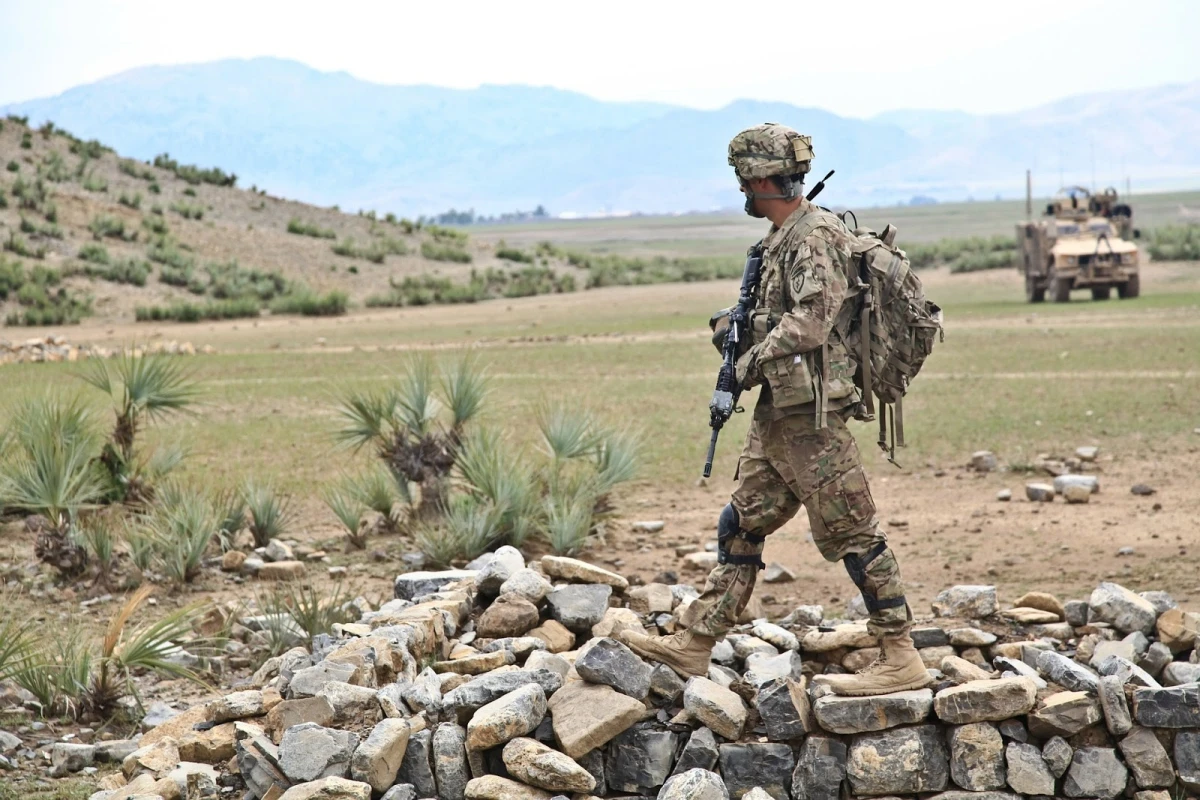For over three years, there have been substantive efforts by the U.S., its allies and the Afghan government to negotiate peace deals and end the war in Afghanistan. What began in 2001 as a U.S. operation against the Taliban in Afghanistan, soon spiralled into a protracted war involving regional as well as international actors. The war in Afghanistan was largely against the Taliban – an extremist Islamist militant group that controls large parts of the country and has links with local and international terror outfits such as the Al Qaeda and Daesh. Since the beginning, the justification that the U.S. provides for waging the Afghan War is that it is a part of their Global War on Terror – the Taliban was harbouring terror groups and it needed to be stopped at all costs.
As the war progressed, however, so did the U.S.’s perception of terror and their ability to counter it. For a long time, the goal was to drive the Taliban out of power in the regions that it controlled, and ensure it does not provide a base for terror outfits in Afghanistan. However, over the past decade, there has been a decided shift in America and its allies’ response to the Taliban – instead of total defeat, there have been attempts to negotiate a power-sharing deal with the Taliban. Currently, there is a conditional peace deal with the Taliban that was signed in February 2020 announcing that U.S. troops would be out by 1st May, and talks are scheduled in Turkey this month involving regional actors to finalise the peace process. While there is no doubt that both the Taliban and the U.S. want to hasten the end of the war, the power dynamics in the country after the troops leave remain worrisome. Power-sharing with the Taliban essentially depends on the moderation of its ideology, and a firm agreement ensuring peace in the region. The rising violence by the Taliban in the past few weeks raises pertinent questions about its moderation and commitment to peace, as well as the U.S.’s priorities in Afghanistan. Should the U.S., in its haste to end the war, agree to a deal that will leave Afghanistan at the mercy of the Taliban, it would be detrimental to all actors involved.
There are three main reasons why the current peace treaty to withdraw from Afghanistan by May 1st would likely provide an edge to the Taliban to take over the country. The first reason is the history behind the treaty itself, which was signed in February 2020. Under President Donald Trump, the focus was on ‘bringing back the troops from America’s 18-year long war.’ The negotiations between the Taliban and the U.S. government began with demands for power-sharing between the Taliban and the Afghan Government, an end to the Taliban’s support for terrorist organisations, a cease-fire declaration by the Taliban and the withdrawal of American troops. However, the final peace treaty that was signed just required the Taliban’s guarantee that it would not allow terrorist groups against the U.S. “on Afghan soil.” The number of concessions given to the Taliban displayed U.S.’s impatience with the war. The second reason has to do with the role of the Afghan government. The first treaty in February 2020 did not involve Kabul or President Ashraf Ghani in any way. While talks were held later in September that year involving the civilian government, the government and the Taliban still hold differing views on fundamental issues. Unless the talks between Kabul and the Taliban are conclusive, U.S. withdrawal of troops will only add to the chaos. The Afghan government needs the military backing of the U.S. if it is to exercise any sort of leverage against the Taliban, or it could potentially lose power the minute troops are withdrawn. The third and most important reason why the Taliban would likely have an edge in Afghanistan once U.S. troops leave is because of its understanding of its position. Experts and scholars both agree that there has been “little to no change” in the Taliban’s extremism, even after ceasefires and peace talks with other actors. The Taliban is aware that the withdrawal of U.S. troops would leave Kabul unprepared to take on its attacks. After the February 2020 deal with the U.S., the Taliban visibly reduced its attacks on U.S. troops. At the same time, it increased the number of attacks on the Afghan National Defense and Security Forces, according to a report by the U.S. Special Inspector General for Afghanistan Reconstruction. The relentless nature of the Taliban in dealing with the Afghan government is a fairly clear indicator of their strive for total control.
The three-way negotiations between the U.S., Taliban and the Afghan government make it highly unlikely for peace to emerge in the region anytime soon. The Biden government’s actions in these crucial months before the May 1st withdrawal need to reflect not just the U.S.’s counterterrorism priorities but also the larger stability and prosperity of the region. Any narrative of the Taliban’s moderation falls short of living up to the ground reality in Afghanistan, and the U.S. needs to consider the same. The role of international and regional stakeholders also comes in here. For sustainable peace, diplomatic talks between the Taliban and the Afghan government need to be moderated by countries that are invested both in the internal security of Afghanistan and the region in general. China, India, Russia and Pakistan are all key players in the conflict and have vested interests in Afghanistan. If the U.S. prioritises ending the war over safeguarding Afghanistan for the future, other players should be brought in to mediate and bring about conclusive peace in the region.
Akanksha Mishra is a student of political science and international relations at Ashoka University.
We publish all articles under a Creative Commons Attribution-Noderivatives license. This means any news organisation, blog, website, newspaper or newsletter can republish our pieces for free, provided they attribute the original source (OpenAxis).

